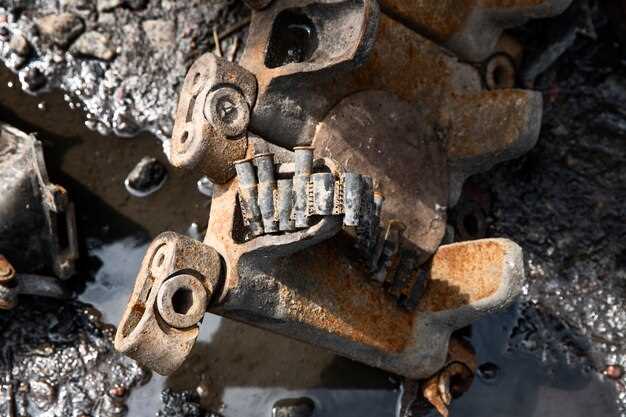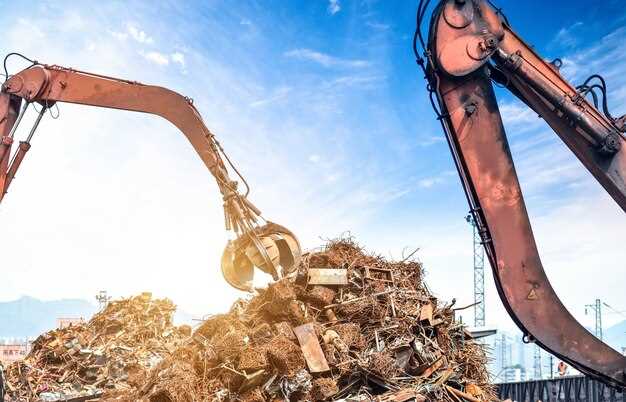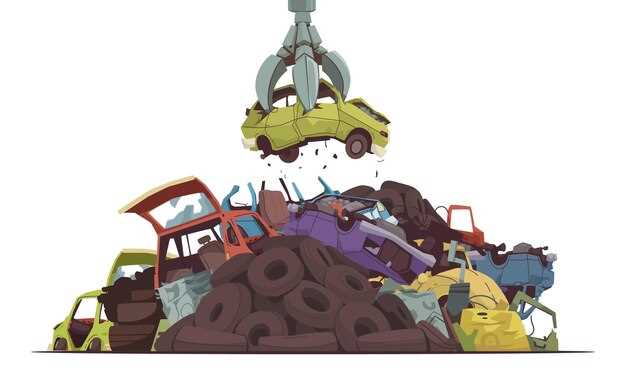
In today’s environmentally conscious world, reuse and recycling have become essential practices, especially in the automotive industry. Salvage vehicles, often seen as mere remnants of their former glory, hold immense potential for sustainable resource management. By carefully dismantling these vehicles, valuable parts can be salvaged, refurbished, and repurposed, extending their life cycle and reducing waste.
This article aims to shed light on the process of recycling parts from salvage vehicles, making it accessible to both enthusiasts and everyday car owners. Understanding how to efficiently extract and recycle components not only contributes to environmental sustainability but also offers significant financial savings. From essential mechanical parts to electronic systems, the possibilities for reuse are vast and varied.
By following a few guidelines and best practices, anyone can participate in this rewarding endeavor. Whether you’re a DIY enthusiast looking to source affordable parts or an environmentally conscious individual wanting to minimize your carbon footprint, learning the art of recycling parts from salvage vehicles can make a difference. Let’s explore the straightforward steps and benefits of this valuable process.
Identifying Usable Parts in Salvage Vehicles

When considering the reuse of components from salvage vehicles, the first step is to thoroughly inspect each car. Start by assessing the overall condition of the vehicle, looking for signs of damage or corrosion that may affect the parts’ integrity.
Focus on high-value components such as the engine, transmission, and electrical systems. These parts often retain their functionality even when the body of the car is compromised. Check the odometer reading and maintenance history if available, as these factors can indicate the reliability of the components.
Exterior components like doors, fenders, and bumpers are also viable candidates for reuse, provided they are free of major dents or structural damage. Inspect the seals and hinges to ensure they operate correctly and can be easily fitted to another vehicle.
Next, consider interior parts such as seats, dashboards, and infotainment systems. Look for upholstery that is well-preserved and electronics that are fully functional. Ensure that all necessary wiring and connectors are intact for easier installation later on.
Additionally, smaller components like headlights, taillights, mirrors, and wheels can be valuable as they often remain undamaged even if the vehicle suffers a collision. Verify that all lenses are intact and that the integrated electronics function as expected.
Lastly, always prioritize safety components like airbags, brakes, and suspension elements. These parts are critical for maintaining vehicle safety and should only be reused if they have not been deployed or excessively worn during their lifespan.
By taking the time to carefully assess and identify usable parts, you can maximize the potential of salvage vehicles while contributing to an eco-friendly approach to automotive maintenance and parts sourcing.
Steps to Safely Remove and Store Reusable Parts

Recycling parts from salvage vehicles can be a rewarding and environmentally friendly practice. To ensure safety and efficiency during the process, follow these essential steps for removing and storing reusable parts.
1. Gather Necessary Tools
Before starting the removal process, collect all necessary tools such as wrenches, screwdrivers, pliers, and safety equipment. Wearing gloves and safety goggles is crucial to protect yourself from sharp edges and debris.
2. Create a Safe Working Environment
Choose a well-ventilated area that is free of distractions. Ensure that the vehicle is on a flat surface and secured with wheel chocks to prevent movement while you work.
3. Disconnect the Battery
Before removing any parts, disconnect the vehicle’s battery to prevent electrical shocks and short circuits. This step is vital for safety, especially when working with electronic components.
4. Identify Reusable Parts
Inspect the vehicle for parts that are in good condition and can be reused. Common examples include engines, transmissions, doors, windows, and interior components. Make sure these parts are operational and free of significant damage.
5. Remove Parts Methodically
Begin by carefully removing the identified parts, starting with the easiest ones. Use appropriate tools to avoid damaging the components or surrounding areas. Label each part as you remove it to facilitate easier reinstallation or storage.
6. Clean Removed Parts
Once a part is removed, clean it thoroughly to remove any dirt, grease, or grime. This step is essential for the preservation of the part and will facilitate its reuse in the future. Use appropriate cleaning solutions and avoid harsh chemicals that might damage sensitive components.
7. Store Parts Properly
Store reusable parts in a dry and temperature-controlled environment. Use shelves or bins to keep them organized and easy to access. It’s advisable to cover parts with tarps or plastic to protect them from dust and moisture.
8. Document Everything
Maintain a record of the parts you have removed, including their condition and potential reuse. This documentation will help track your recycling efforts and assist if you choose to sell or trade these parts later.
9. Dispose of Unusable Components Responsibly
For parts that are beyond reuse, ensure you dispose of them in accordance with local recycling regulations. Proper disposal is crucial for minimizing waste and protecting the environment.
By following these steps, you can safely and efficiently remove and store reusable parts from salvage vehicles, promoting recycling and reuse in automotive practices.
Best Practices for Selling or Donating Recycled Car Components
When recycling car components, it’s essential to adopt best practices that ensure a smooth process for selling or donating parts. First, accurately assess the condition and value of each component. Evaluate factors such as functionality, wear and tear, and market demand to determine a fair price or value for donation.
Next, research the appropriate platforms for selling or donating. Online marketplaces, local salvage yards, and community donation centers are excellent options. Ensure that you choose a platform that aligns with the type of parts you have, whether they are mechanical, electrical, or body components.
Provide detailed descriptions and high-quality images of the car parts you intend to sell. This transparency fosters trust with potential buyers or donation recipients. Clearly state any known issues or defects to avoid misunderstandings and facilitate smoother transactions.
For selling, consider pricing your parts competitively, taking into account their condition and the current market for recycled car components. Use comparable listings as a benchmark. If donating, inquire about any tax deduction benefits, as it could be advantageous for both you and the recipient organization.
Finally, ensure proper disposal of any unsellable or non-donatable parts. Collaborate with recycling facilities that specialize in automotive components. This not only adheres to environmental regulations but also promotes sustainability in the recycling process.
